
We sampled all 11 flavors of milk tea by the popular brand so that you’ll know exactly which one to grab next for your perfect cuppa.
Gogo no Kocha (“Afternoon Black Tea”) by beverage giant Kirin is one of the most popular and recognizable brands of bottled tea on the Japanese market. You’d be hard-pressed to walk into any convenience store without seeing at least one of its offerings. In particular, Gogo no Kocha’s line of hot and cold milk teas are quite famous, being the go-to drink of choice for many Japanese people throughout the year.
Our Japanese-language reporter Natsuki Gojo recently set out to sample all 11 varieties of Gogo no Kocha’s milk teas that were available for purchase as of the end of January. Up until now, she’d always grabbed a random bottle on a whim, but this assignment has taught her how to be much more strategic about her selection. Here’s one big secret–did you know that the tea leaves used in the various milk teas actually differ and make use of different flavor extraction methods?
Let’s break down the different products by the leaves.
Kandy tea leaves (from Kandy, Sri Lanka, tea made from these leaves is light and has a low astringency) are used in:
● Milk Tea (Cold)
When you think “Gogo no Kocha milk tea,” this classic flavor is most likely the one that springs to your taste buds. This standard offering is made using 20 percent Kandy tea leaves and the finished product is intended to give balance to both the aromatic black tea and milk so that you can enjoy both equally.
● Milk Tea (Hot)
The hot version of the milk tea is offered only in the wintertime through March (note the orange bottlecap, which signifies “hot”). It also uses 20 percent Kandy tea leaves and is meant to taste very similar to the cold version above–just in warm form.
● Tea Selection Creamy Tea Latte (Hot and Cold)
These offerings also use 20 percent Kandy tea leaves, but this time combined with fresh cream for an especially rich and creamy taste. Apricot and peach notes add a floral hint perfect for cold winter days. They’re available annually in stores until the end of March.
Uva tea leaves (known for their fruitiness and astringency, this variety of tea leaf from Sri Lanka is lauded as being extremely compatible for use in milk teas) are used in:
● Milk Tea Plus (Cold)
This drink is a solid, basic, and mild milk tea. With the addition of over 100 billion Plasma lactic-acid healthy bacteria, it’s a good option for those people who want to enjoy the taste of milk tea alongside a healthy boost for their gut.
● Espresso Tea Low Sugar (Hot)
Using 80 percent Uva tea leaves, the resulting flavor is thanks to the espresso extraction method. Its taste features sweetness followed by some bitterness. Out of all of the Gogo no Kocha teas that Natsuki sampled, this one definitely packed the most prominent sensation of astringency in her opinion.
● Caramel Tea Latte (Hot and Cold)
The sweet caramel flavor is the major force in this drink, and Natsuki almost couldn’t taste any of the astringency of the Uva tea leaves at all. It would make a great dessert in and of itself, so make sure you try it before March when it will disappear from shelves.
Dimbula tea leaves (which produce a mild-tasting tea, with the leaves, harvested in January and February in Sri Lanka, having an aroma reminiscent of roses and a strong astringency) are used in:
● Hojun Royal Milk Tea (Hot and Cold)
This full-bodied tea uses 10 percent of the highest-quality Dimbula tea leaves for a particularly rich taste. You can only find it in vending machines, so don’t waste time looking in your local convenience store–instead, scour the machines on the street.
● Tea Selection Chocolate Tea Latte (Hot and Cold)
This is a brand-new product that only just went on the market on January 30. Natsuki was so surprised by its rich chocolate taste that she thought she was mistakenly drinking hot chocolate for a moment. It makes use of cocoa powder sourced from 100 percent Ghana cacao beans and fresh cream for that luxuriously chocolatey flavor.
Finally, a handful of Gogo no Kocha Milk Teasmilk teas make use of a blend of different leaves depending on the targeted flavor.
● Oishii Sugarless Milk Tea (Cold)
This drink is the only one in the Gogo no Kocha series to be unsweetened. Made from a blend of Darjeeling and Uva tea leaves, it boasts a refreshing flavor.
● Espresso Tea Latte (Hot and Cold)
This beverage is a blend of tea leaves produced using the espresso extraction method. It’s a rich tea latte with a strong essence of black tea.
● Tea Selection The Milk Tea English Blend (Cold)
A blend featuring 51 percent Uva tea leaves and 47 percent Assam tea leaves, it also uses 1.5 times the standard amount of tea leaves as other milk teas, resulting in a rich and not overly sweet taste beloved by many. It’s only available until around February or March.
With this guide, Natsuki hopes that you’ll be able to identify the perfect variety of milk tea to suit your mood moving forward. Of course, if you don’t feel like going out at all in the cold of winter, perhaps investing in this Milk Tea Maker is the best option.
Photos © SoraNews24
● Want to hear about SoraNews24’s latest articles as soon as they’re published? Follow us on Facebook and Twitter!
[ Read in Japanese ]

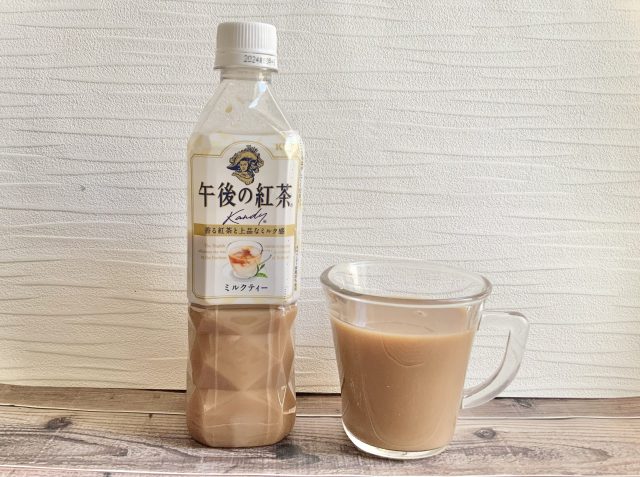
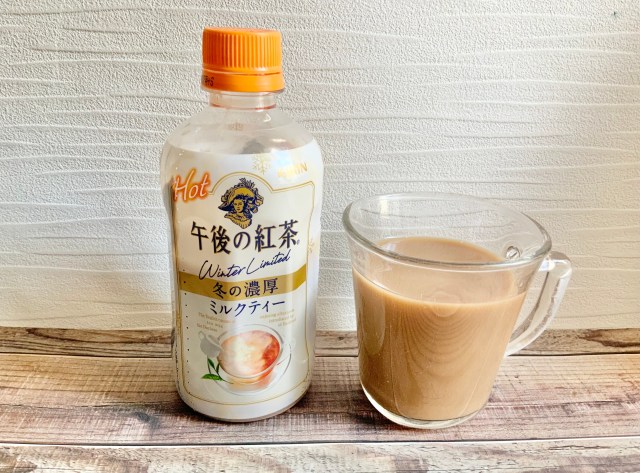
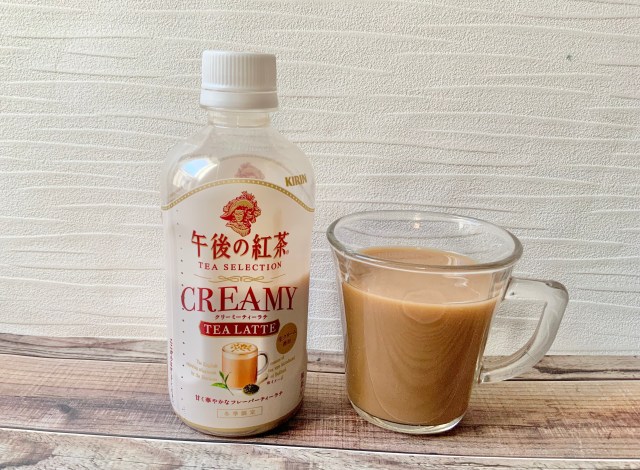
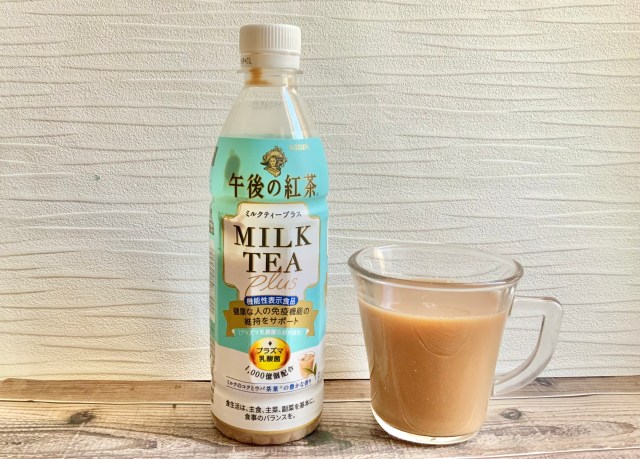

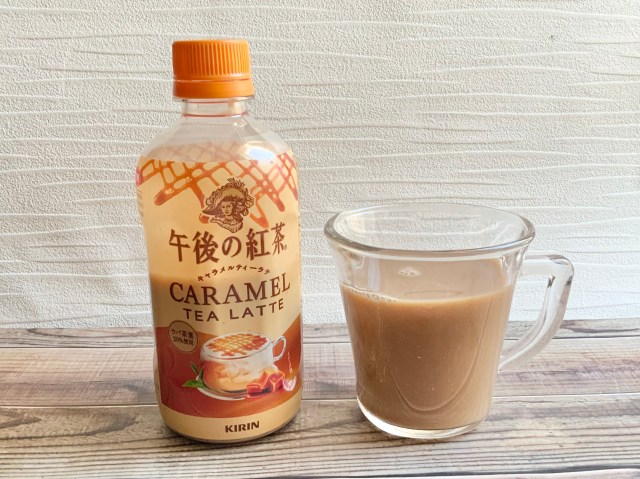
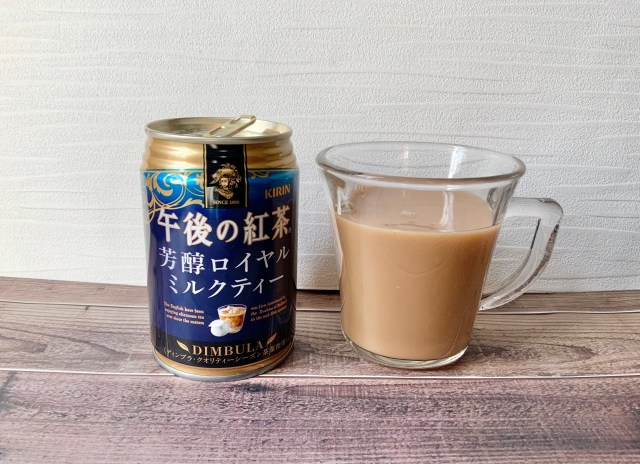

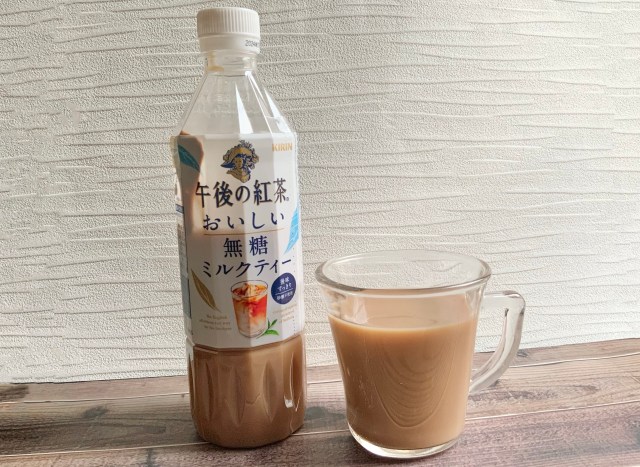
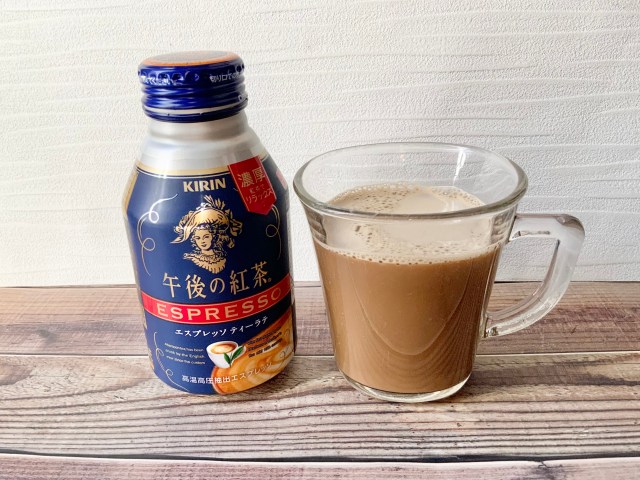
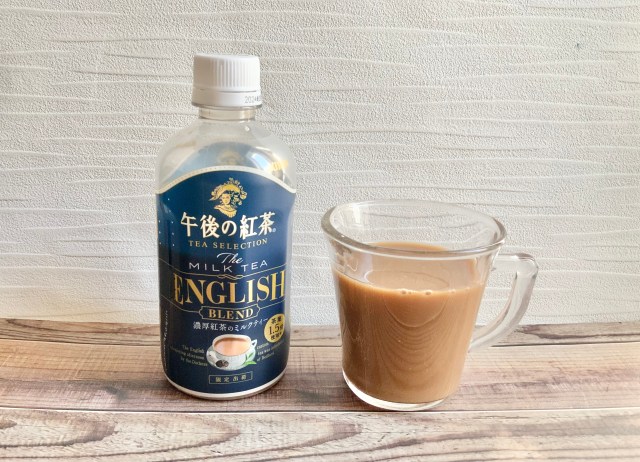
 Drink Green! We check out the amazing “Green Tea Party” presented by Isetan and Ito En! 【Pics】
Drink Green! We check out the amazing “Green Tea Party” presented by Isetan and Ito En! 【Pics】 Oolong tea lattes get a place on the Starbucks Japan menu, but do they get one in our heart too?
Oolong tea lattes get a place on the Starbucks Japan menu, but do they get one in our heart too? Sharp’s Ocha-presso brings traditional Japanese flavor to your kitchen
Sharp’s Ocha-presso brings traditional Japanese flavor to your kitchen Our English writer rates 15 teas from Japanese conbini, is fully hydrated for the rest of summer
Our English writer rates 15 teas from Japanese conbini, is fully hydrated for the rest of summer Godiva chocolate meets Sri Lankan tea in a new frozen drink just in time for summer
Godiva chocolate meets Sri Lankan tea in a new frozen drink just in time for summer Japan’s new difficult-to-drink-from beer glass protects your liver, but it’s a brutal experience
Japan’s new difficult-to-drink-from beer glass protects your liver, but it’s a brutal experience New Pokémon ice cream, dessert drinks, and cool merch coming to Baskin-Robbins Japan【Pics】
New Pokémon ice cream, dessert drinks, and cool merch coming to Baskin-Robbins Japan【Pics】 New samurai glasses are Japan’s latest weird must-have souvenir
New samurai glasses are Japan’s latest weird must-have souvenir Come play hide-and-seek on a deserted Japanese island this August and November
Come play hide-and-seek on a deserted Japanese island this August and November Nintendo history you can feel – Super NES, N64, and GameCube controllers become capsule toys
Nintendo history you can feel – Super NES, N64, and GameCube controllers become capsule toys Demon Slayer: Kimetsu no Yaiba gets new roller coaster attractions and food at Universal Studios Japan
Demon Slayer: Kimetsu no Yaiba gets new roller coaster attractions and food at Universal Studios Japan Doraemon found buried at sea as scene from 1993 anime becomes real life【Photos】
Doraemon found buried at sea as scene from 1993 anime becomes real life【Photos】 Infographic shows how working culture differs across the globe
Infographic shows how working culture differs across the globe Hello, cosmetics! Clinique teams up with Hello Kitty this summer for first-time collaboration
Hello, cosmetics! Clinique teams up with Hello Kitty this summer for first-time collaboration Japan’s new canned chu-hai with fresh lemon slice: disappointing gimmick or drink revelation?
Japan’s new canned chu-hai with fresh lemon slice: disappointing gimmick or drink revelation? “The most Delicious Cup Noodle in history” – Japan’s French Cup Noodle wins our heart【Taste test】
“The most Delicious Cup Noodle in history” – Japan’s French Cup Noodle wins our heart【Taste test】 Starbucks releases a cute Frappuccino and Unicorn Cake…but not in Japan
Starbucks releases a cute Frappuccino and Unicorn Cake…but not in Japan Kyoto Tower mascot termination reveals dark side behind cute Japanese characters
Kyoto Tower mascot termination reveals dark side behind cute Japanese characters McDonald’s Japan’s Soft Twist Tower: A phantom ice cream only sold at select branches
McDonald’s Japan’s Soft Twist Tower: A phantom ice cream only sold at select branches Yabai Ramen: What makes this Japanese ramen so dangerous?
Yabai Ramen: What makes this Japanese ramen so dangerous? Finally! Nintendo Japan expands Switch 8-bit controller sales to everybody, Online member or not
Finally! Nintendo Japan expands Switch 8-bit controller sales to everybody, Online member or not Japanese government wants to build luxury resorts in all national parks for foreign tourists
Japanese government wants to build luxury resorts in all national parks for foreign tourists To combat declining birth rate, Japan to begin offering “Breeding Visas” to foreigners
To combat declining birth rate, Japan to begin offering “Breeding Visas” to foreigners 10 things you should buy at 7-Eleven in Japan
10 things you should buy at 7-Eleven in Japan Studio Ghibli releases anime heroine cosplay dresses that are super comfy to wear
Studio Ghibli releases anime heroine cosplay dresses that are super comfy to wear Woman charged for driving suitcase without a license in Osaka
Woman charged for driving suitcase without a license in Osaka Studio Ghibli unveils My Neighbour Totoro miniature house model
Studio Ghibli unveils My Neighbour Totoro miniature house model Kyoto experiencing problems with foreign tourists not paying for bus fares, but not on purpose
Kyoto experiencing problems with foreign tourists not paying for bus fares, but not on purpose Fighting mild hunger with a Japanese soda that turns into jelly in the stomach【Taste test】
Fighting mild hunger with a Japanese soda that turns into jelly in the stomach【Taste test】 Studio Ghibli’s Howl’s Moving Castle tapestry unveiled in Japan for first time
Studio Ghibli’s Howl’s Moving Castle tapestry unveiled in Japan for first time McDonald’s new Happy Meals offer up cute and practical Sanrio lifestyle goods
McDonald’s new Happy Meals offer up cute and practical Sanrio lifestyle goods Sales of Japan’s most convenient train ticket/shopping payment cards suspended indefinitely
Sales of Japan’s most convenient train ticket/shopping payment cards suspended indefinitely Sold-out Studio Ghibli desktop humidifiers are back so Totoro can help you through the dry season
Sold-out Studio Ghibli desktop humidifiers are back so Totoro can help you through the dry season Japanese government to make first change to romanization spelling rules since the 1950s
Japanese government to make first change to romanization spelling rules since the 1950s Foreigner’s request for help in Tokyo makes us sad for the state of society
Foreigner’s request for help in Tokyo makes us sad for the state of society Ghibli founders Toshio Suzuki and Hayao Miyazaki contribute to Japanese whisky Totoro label design
Ghibli founders Toshio Suzuki and Hayao Miyazaki contribute to Japanese whisky Totoro label design Tokyo’s most famous Starbucks is closed
Tokyo’s most famous Starbucks is closed Princesses, fruits, and blacksmiths: Study reveals the 30 most unusual family names in Japan
Princesses, fruits, and blacksmiths: Study reveals the 30 most unusual family names in Japan Suntory explains the simple science behind how it makes its amazing clear tea beverages【Video】
Suntory explains the simple science behind how it makes its amazing clear tea beverages【Video】 Trying out Starbucks Japan’s ultra relaxing 2021 seasonal summer tea drinks【Taste Test】
Trying out Starbucks Japan’s ultra relaxing 2021 seasonal summer tea drinks【Taste Test】 McDonald’s Japan releases matcha green tea cake, frappes and lattes for a limited time
McDonald’s Japan releases matcha green tea cake, frappes and lattes for a limited time Häagen-Dazs Japan brings out new limited-edition Hojicha Latte roasted green tea ice cream
Häagen-Dazs Japan brings out new limited-edition Hojicha Latte roasted green tea ice cream Merry matcha! Starbucks Japan adds two subtly changed, deliciously different green tea beverages
Merry matcha! Starbucks Japan adds two subtly changed, deliciously different green tea beverages Stylish green tea “chablets” from Shizuoka are our new way favorite way to grab a cuppa
Stylish green tea “chablets” from Shizuoka are our new way favorite way to grab a cuppa Suntory comes out with sweet Lipton tea drink for Halloween — the Pumpkin Tea Latte!
Suntory comes out with sweet Lipton tea drink for Halloween — the Pumpkin Tea Latte! Christmas arrives early at Starbucks in Japan with new Merry Cream Frappuccino
Christmas arrives early at Starbucks in Japan with new Merry Cream Frappuccino Experience afternoon tea with a Japanese twist in Harajuku!【Photos】
Experience afternoon tea with a Japanese twist in Harajuku!【Photos】 Red Matcha: A new type of Japanese powdered tea years in the making
Red Matcha: A new type of Japanese powdered tea years in the making It’s sakura bubble tea season at TP TEA stands across Japan!
It’s sakura bubble tea season at TP TEA stands across Japan! Starbucks blends Japanese and Western flavours together in new Frappuccino
Starbucks blends Japanese and Western flavours together in new Frappuccino Milk Tea Maker from Japan is a life-changer
Milk Tea Maker from Japan is a life-changer Cold Stone Creamery Japan celebrates spring in style with green tea and sakura flavors
Cold Stone Creamery Japan celebrates spring in style with green tea and sakura flavors Matcha green tea meets strawberries in Japan-exclusive drinks from The Coffee Bean & Tea Leaf
Matcha green tea meets strawberries in Japan-exclusive drinks from The Coffee Bean & Tea Leaf
Leave a Reply